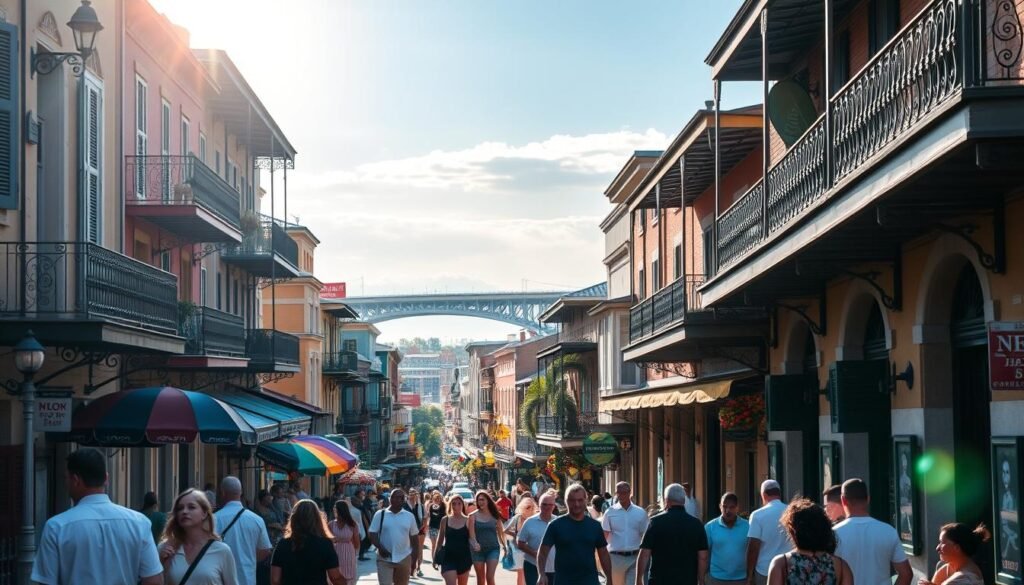Surprising fact: over half a million visitors flood the French Quarter each spring, so timing your trip changes everything about your experience in the Big Easy.
I don’t believe there’s a single best time for every traveler. I match my plans to weather, events, and budget so I can enjoy the city without stress. That means thinking about high season (February–May), shoulder months (September–January), and slow summer weeks (June–August).
Spring and fall offer the most pleasant days, while summers bring heat, humidity, and afternoon storms. Major draws like Mardi Gras and Jazz Fest shape crowds and prices, so I book early for festivals and watch for off-peak deals in August weekdays.
I also flag hurricane season (June 1–November 30) and use travel insurance if I head there late summer into fall. Over the next sections, I’ll give a practical, month-by-month lens you can use when planning trip dates and neighborhood choices.
Key Takeaways
- High season runs Feb–May; expect crowds and lively festivals.
- Spring and fall have the most comfortable weather for walking the city.
- Summer is hot and cheaper—look for August weekday deals.
- Hurricane season spans June–November; plan insurance for late-summer travel.
- Book early for Mardi Gras and Jazz Fest to lock better options.
- Neighborhoods and music venues shine during festival spillover.
My quick take on the best times to visit the Big Easy
I pick dates by what I want from the city—easy walking weather, lively streets, or lower prices. That approach helps me choose when to visit New Orleans without getting burned by crowds or surprise rates.
Spring and fall for the sweet spot: weather, vibes, and value
Spring brings 50s–70s daytime temps and a parade-fueled energy. Jazz Fest and Carnival parades make late March through early May feel electric.
Fall often offers 60s–80s days and October is usually the driest month. Mid-October gives crisp nights and calmer streets for exploring patios and music venues.
When I go for deals, crowds, and big-time festivities
- I aim for late March–early May or mid-October for comfort and decent availability.
- For lower prices, August weekdays or post-holiday January work well.
- For major events, I target early Carnival parades or Jazz Fest Thursdays to dodge the worst crowds.
- I always scan the events calendar and book flexible rates during late-summer uncertainty.
| Window | Typical Temps | What I like | Booking note |
|---|---|---|---|
| Late Mar–Early May | 50s–70s°F | Parades, patios, music | Book early for festivals |
| Mid-October | 60s–80s°F | Drier days, calm nights | Good availability, milder prices |
| August weekdays / Jan | Hot in Aug, mild in Jan | Lower prices, fewer crowds | Flexible rates helpful |
| Peak festival dates | Varies | High energy, must-see events | Expect higher prices |
New Orleans by travel season: high, shoulder, and low
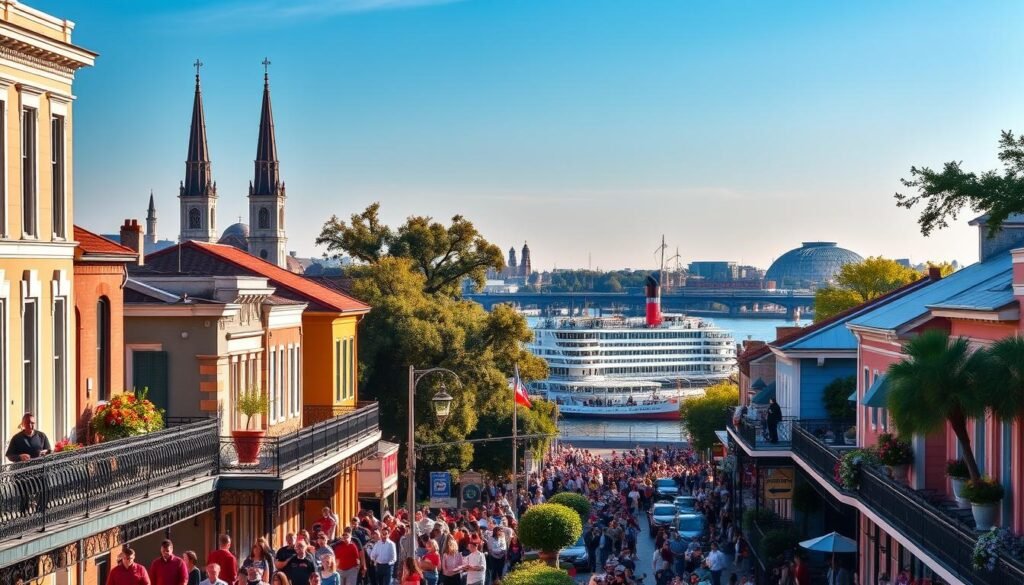
I break the year into three clear seasons so I can plan around crowds, weather, and prices.
High season (February–May): parades, perfect temps, peak prices
High season runs February through May. Carnival and Jazz Fest fill streets and parks, and spring days are mild for walking.You can learn more about best-time-to-visit-aruba
Note: I budget extra for hotels and book early during this peak stretch.
Shoulder season (September–January): festivals, holidays, calmer streets
Shoulder season covers September through January. I like fall festivals, Halloween energy, and holiday lights without the festival crush.
October is usually the driest month and offers easier dinner reservations and quieter afternoons.
Low season (June–August): heat, humidity, savings, and indoor fun
Low season means summer heat, frequent afternoon storms, and the best deals on flights and rooms.
- I lean on indoor attractions like The National WWII Museum and Mardi Gras World during hot stretches.
- COOLinary runs in August through mid-September and is a great way to try top kitchens with prix-fixe menus.
- When I travel in low season I pick hotels with pools and central locations to limit hot walks.
Season-by-season guide: weather, events, and crowds you can expect
Each season in the city brings its own weather, events, and crowd rhythm, so I pick dates based on what I want most.You can learn more about best-time-to-visit-peru
Winter (December–February)
Winter delivers mild days and cool nights. Daytime highs often sit in the mid-60s while lows dip into the mid-40s.
Holidays shine: festive lights, Reveillon menus, and easier daytime walks fill winter with charm. I watch Sugar Bowl dates near New Year’s—those events spike crowds and lodging demand.
Spring (March–May)
Spring ramps up quickly. Temperatures usually range from the 50s to the 70s and outdoor life returns in full force.
Mardi Gras and Jazz Fest define the months; I plan garden strolls in the Garden District and City Park between events.
Summer (June–August)
Summer brings highs near the low 90s and high humidity, with frequent afternoon rain and storms.
I use wet afternoons as an excuse to visit The National WWII Museum, Ogden Museum of Southern Art, or Mardi Gras World. COOLinary runs from early August to mid-September and offers real restaurant value.
Fall (September–November)
Fall moderates into pleasant highs in the 70s and cooler nights in the 50s–60s. October tends to be the driest month.
Halloween delivers theatrical costumes and parades, and music and food festivals in November keep the city lively without shoulder-to-shoulder crowds.
“I plan around local events and the daily weather so I can enjoy outdoor meals, museum hours, and quieter neighborhood walks.”
- Winter: mild days, cooler nights, holiday energy, watch Sugar Bowl.
- Spring: parade season and Jazz Fest, ideal for parks and patios.
- Summer: hot, humid, stormy afternoons—great for museums and COOLinary deals.
- Fall: drier, comfortable weather and festival-friendly streets.
Mardi Gras and Jazz Fest: how I plan around New Orleans’ marquee events
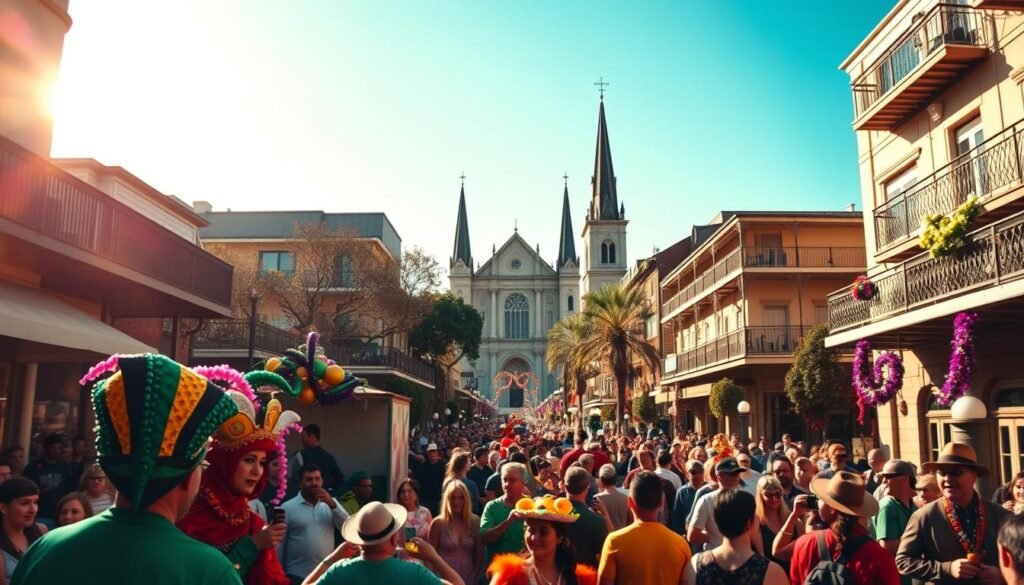
Major festivals change the city’s rhythm, so I schedule around crowds, lines, and where music spills after hours. Carnival starts January 6 and builds toward Mardi Gras day in mid-February or early March, and Jazz Fest runs across two weekends in late April and early May.You can learn more about best-time-to-visit-london
Mardi Gras and Carnival Season
I track parade schedules early and pick a base near Uptown or the St. Charles streetcar line for easier access and calmer vibes. Smaller community parades like Krewe of Muses and Krewe of Barkus give authentic pageantry without the largest crowds.
Practical tips: I aim for weekday parades or earlier Carnival dates when possible. I carry a lightweight bag for throws and set solid meeting points—cell service can lag during peak parade blocks.
Jazz Fest planning
For Jazz Fest, I book lodging months ahead and often target Thursdays for lighter lines and smoother entry. If I don’t have festival tickets, I build nights around local venues—Maple Leaf Bar and The Spotted Cat often host festival-level sets with low or no cover.
Booking, flexibility, and neighborhood alternatives
Big events push airfares and hotel rates up, so I lock must-have restaurant reservations and reserve refundable lodging where I can. If prices spike, I look for stays outside the French Quarter for value and less crowded streets.
- I choose quieter neighborhood options when I want space from peak festivities.
- I keep plans flexible for weather shifts and lineup changes.
- I respect parade etiquette and tip performers—locals keep traditions alive.
“I prefer community parades or nearby Northshore towns when I want the pageant without the weekend crush.”
Hurricane season, heat, and rain: planning smart for New Orleans weather
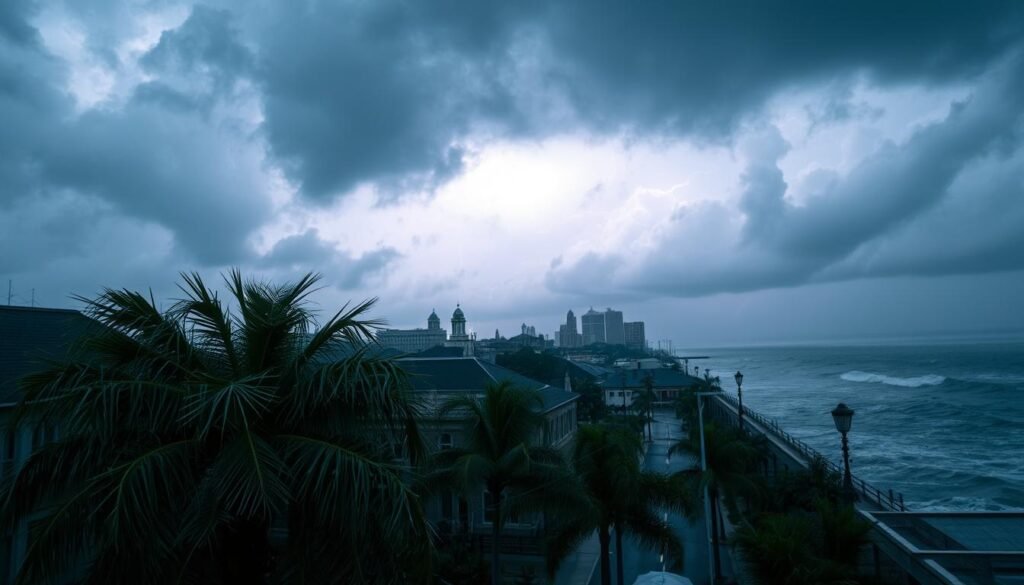
Because hurricane season peaks in late summer, I plan trips with flexibility and simple safeguards.
Hurricane season runs June 1–November 30, with the highest risk in August and September. I monitor National Hurricane Center advisories starting 10–14 days out and add travel insurance when forecasts look active.You can learn more about best-time-to-visit-new-zealand
How I prep for storms and unsettled weather
I save confirmations offline and confirm my hotel’s shelter guidance. For late-August or September travel I keep departure windows open by a day or two.
Heat and humidity hacks for summer days
Summer highs often hit the low 90s with heavy humidity and pop-up rain. I build an AC-first plan: museums late morning, long shaded lunches, then short evening walks.
- I pick hotels with a pool and a walkable base to cut midday exposure.
- I dress in breathable fabrics, carry sunscreen and a light rain layer, and time breaks for typical afternoon showers.
- I map shaded routes and use streetcars or rideshares for long, hot hops.
- Indoor alternates—The National WWII Museum, Ogden Museum, and Mardi Gras World—keep days productive when rain arrives.
“Stormy forecasts don’t always ruin plans—New Orleans often bounces back fast, so flexible planning wins.”
For further context on choosing travel windows, see this guide to ideal travel windows.
The best time to visit New Orleans for you
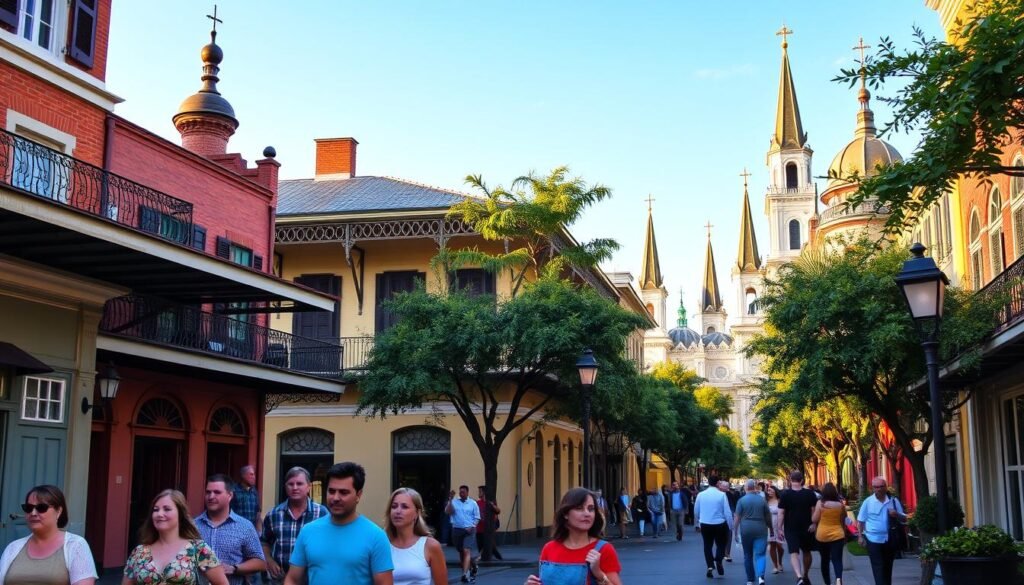
When I plan a trip, I start by picking dates that fit my energy level—party, rest, or food-focused.
For party seekers
Go for peak Carnival and Easter brunch vibes. Peak party energy arrives during Carnival and Mardi Gras, with Easter bringing lively brunches and parades.
I balance parade days with slower mornings and top brunch spots so the trip feels festive, not frantic.
For crowd-averse travelers
Choose fall weekdays or early Carnival dates. October and early November weekdays are calmer, and Uptown or the Garden District offers quieter areas than the French Quarter.
Early-season Carnival dates can give parade flavor with fewer crowds if you avoid main parade routes.
For budget travelers
Look at August weekdays and off-holiday winter. August brings COOLinary deals from early August through mid-September, and winter outside holidays often has lower rates.
Pair weekday stays with prix-fixe restaurant offers and choose hotels with pools for comfort during hot days.You can learn more about best-places-to-visit-in-japan
For food lovers
Late summer and Jazz Fest are culinary sweet spots. Jazz Fest food stalls serve iconic local dishes, and late-summer dining deals let you try top restaurants without festival rates.
For families
Spring and fall work best outside major parade weekends. Parks, museums, and streetcar rides make a relaxed trip that suits kids and adults alike.
- Base in calmer areas like Uptown for quieter nights.
- I build an itinerary with one heavy night, one culture day, and one flexible afternoon.
- Book anchor reservations first—shows or must-try restaurants—then explore neighborhoods.
| Traveler Type | Ideal Window | Suggested Areas | Quick Note |
|---|---|---|---|
| Party seekers | Late Carnival / Easter | French Quarter / Uptown | Book early; expect energy and crowds |
| Crowd-averse | Oct–early Nov weekdays | Uptown, Garden District | Calmer streets, easier dining |
| Budget travelers | Aug weekdays, off-holiday winter | Outskirts, central walkable hotels | Save on rates; use COOLinary menus |
| Families / Food lovers | Spring, Jazz Fest, late summer | City parks, museum areas | Mix outdoor time with kid-friendly eats |
“I keep one free-choice evening for a last-minute show or a restaurant tip from a local—those moments often make the trip.”
Conclusion
Your ideal month depends on what you want: festival energy, mild weather, or lower rates. If you chase parades and Mardi Gras, lock flights and hotels early. For softer crowds and pleasant days, I lean toward October and early November weekdays.
Plan smart during hurricane season (June–November): add flexible bookings or travel insurance and watch forecasts. For bargains, August weekdays pair well with COOLinary menus and fewer crowds.
Whatever you pick, base your stay by vibe — French Quarter for classic energy or Uptown for quieter nights — and build each day around weather, indoor options, and local events. That approach helps me get the most from every trip to the Big Easy.


